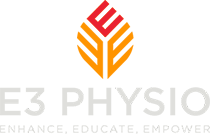Pilates / Clinical Exercise
If you asked people why they do pilates, the main response they give is to ‘strengthen their core’. This might be for improving sports performance, for managing pain, or to simply look and feel better. So a good question is – what is the core?
The main muscles generally known to be the core are the abdominals; especially the deep abdominals (transversus abdominis) and obliques. There is more to the core than this though! From a physio point of view we see all of the trunk muscles as vital in giving you a strong core and a strong base for your arms and legs to work from.
The other muscles involved in trunk strength are the back muscles (multifidus and erector spinae), the lats (latissimus dorsi) and gluteals, as well as hip flexors. Internally the pelvic floor muscles contribute and need to be strengthened as well; so if you are having problems with incontinence a trip to a good pelvic floor physio is a must.
The diaphragm makes up the top of the core, so breathing well and being able to control the diaphragm is essential. Being able to continue breathing is important so that we don’t overload the pelvic floor (the base of our core) and to provide oxygen to our muscles so they work efficiently.
As physiotherapists’ we use the theory of Pilates along with current evidence about anatomy, injuries, and treatment principles to develop a program that addresses your specific problems. This is why it is important to use adapted and individualised versions of the traditional exercises and so we now call it ‘Clinical Exercise’ rather than Pilates.
Clinical exercise is well known to help with low back pain. There has been quite a bit of research into low back pain (LBP) and the value of pilates based exercises in helping. The research has found that it does provide benefits with reduced pain and improve function if you have chronic low back pain (1).
It’s not all about the trunk and back pain though. A strong and effective core also gives a solid base for your arms and legs to work from which helps to transfer force and create drive which helps running, cycling, tennis and, well, basically any sports. This is important for rehab from injuries or surgery that affect your limbs and for helping improve your sports performance.
The ‘core’ is only the beginning as far as clinical exercise is concerned. The initial focus is to learn where these trunk muscles are, and how to activate them. Then we concentrate on building strength and control in the core muscles as we move and then as we do the activities we love – whether sports or day-to-day activities.
The exact exercises your program includes depends on why you are doing clinical exercise. There will need to be a different emphasis on the program for every injury or pain condition, for example an ankle post fracture, versus kneecap (patellofemoral) problems. In each case the exercises have to be planned and performed in a way that gives you the best result.
It is important that you initially do 1-2 individual sessions to learn how to activate these muscles well, while breathing and moving as well. In fact in the acute phase it is best to do individual sessions and then aim to join a class once your pain and control reach a certain level.
It is important to take your time, concentrate and both ‘listen’ and ‘talk’ to your body; focusing on effective movement patterns and flowing controlled movement. This takes a bit of getting used to as we normally move without thinking about or analysing it. The aim is to gradually make these ‘better’ movement patterns automatic so we can use them without thinking, enabling you to move well and enhance your wellbeing.
Sound interesting - get assessed by our in-house expert!
1. Effects of pilates on patients with chronic non-specific low back pain: a systematic review, 2016, Hui-Ting Lin, PT, PhD,1 Wei-Ching Hung, OT, PhD,2 Jia-Ling Hung, PT,3 Pei-Shan Wu, PT,1 Li-Jin Liaw, PT, PhD,3 and Jia-Hao Chang, PhD4, J Phys Ther Sci

